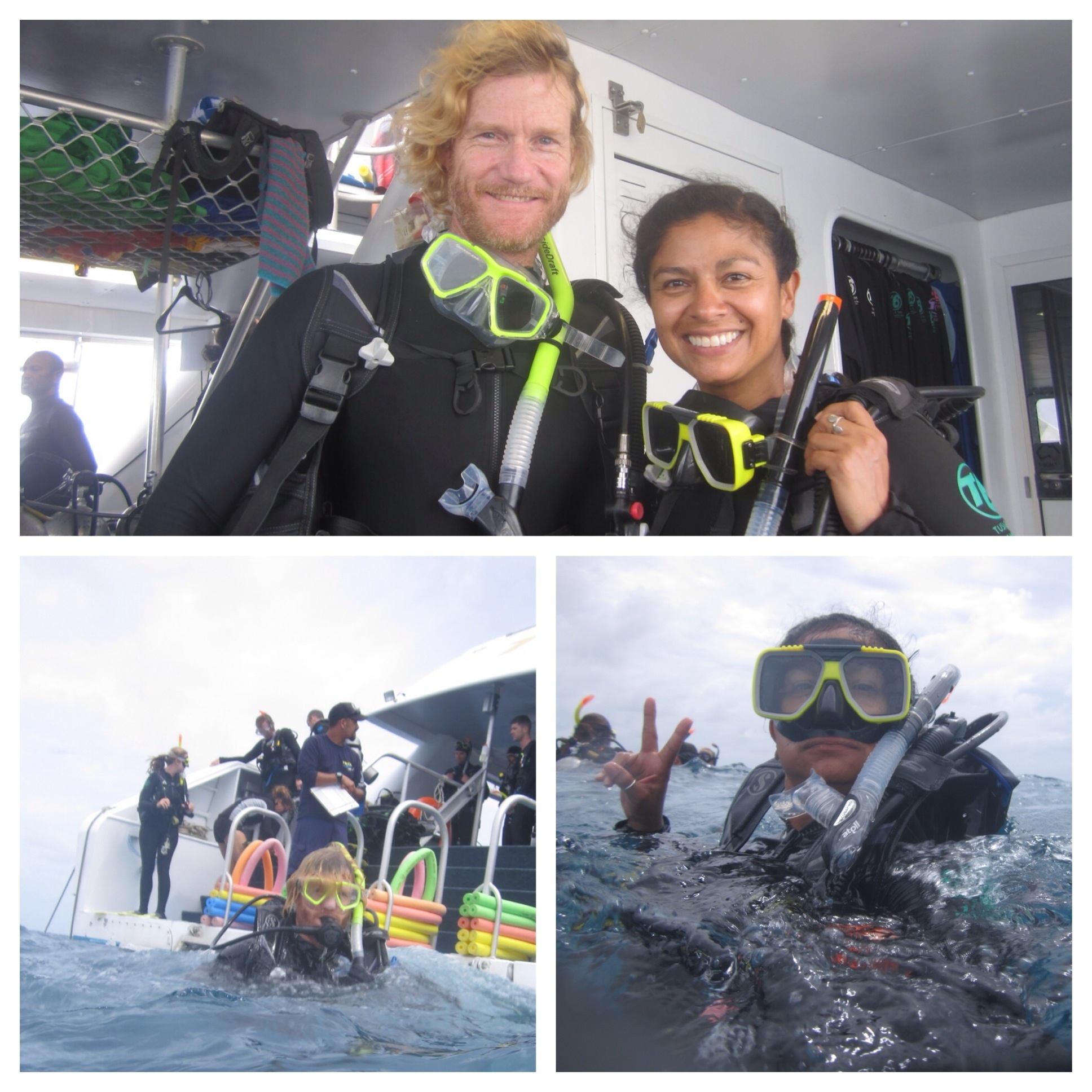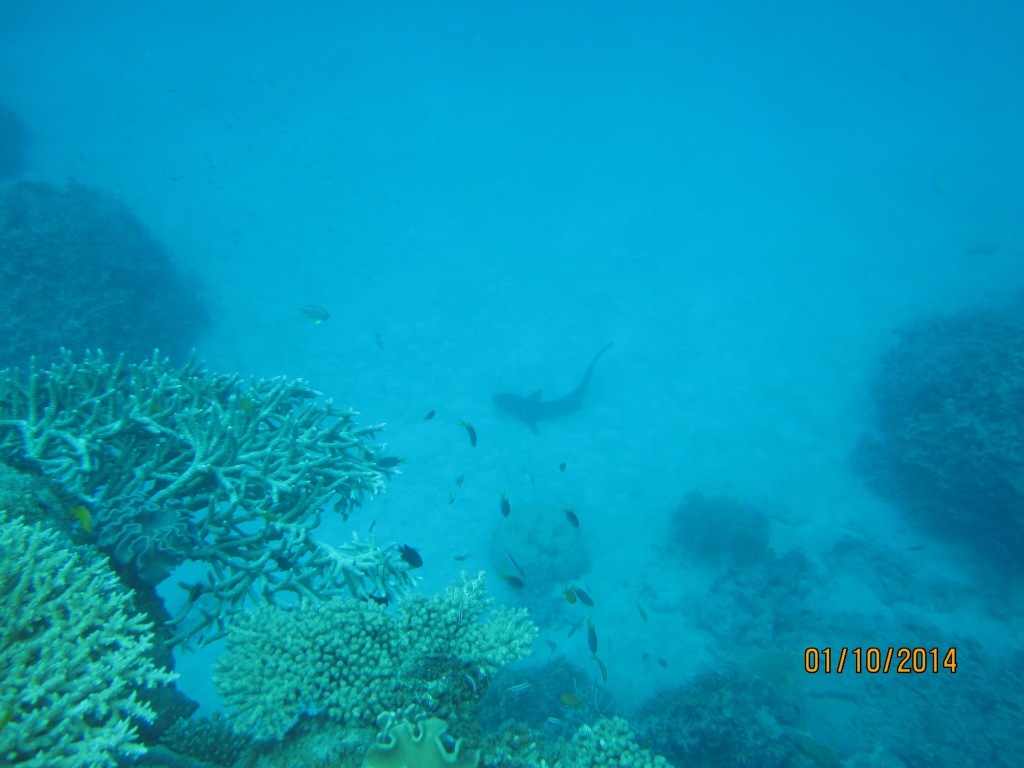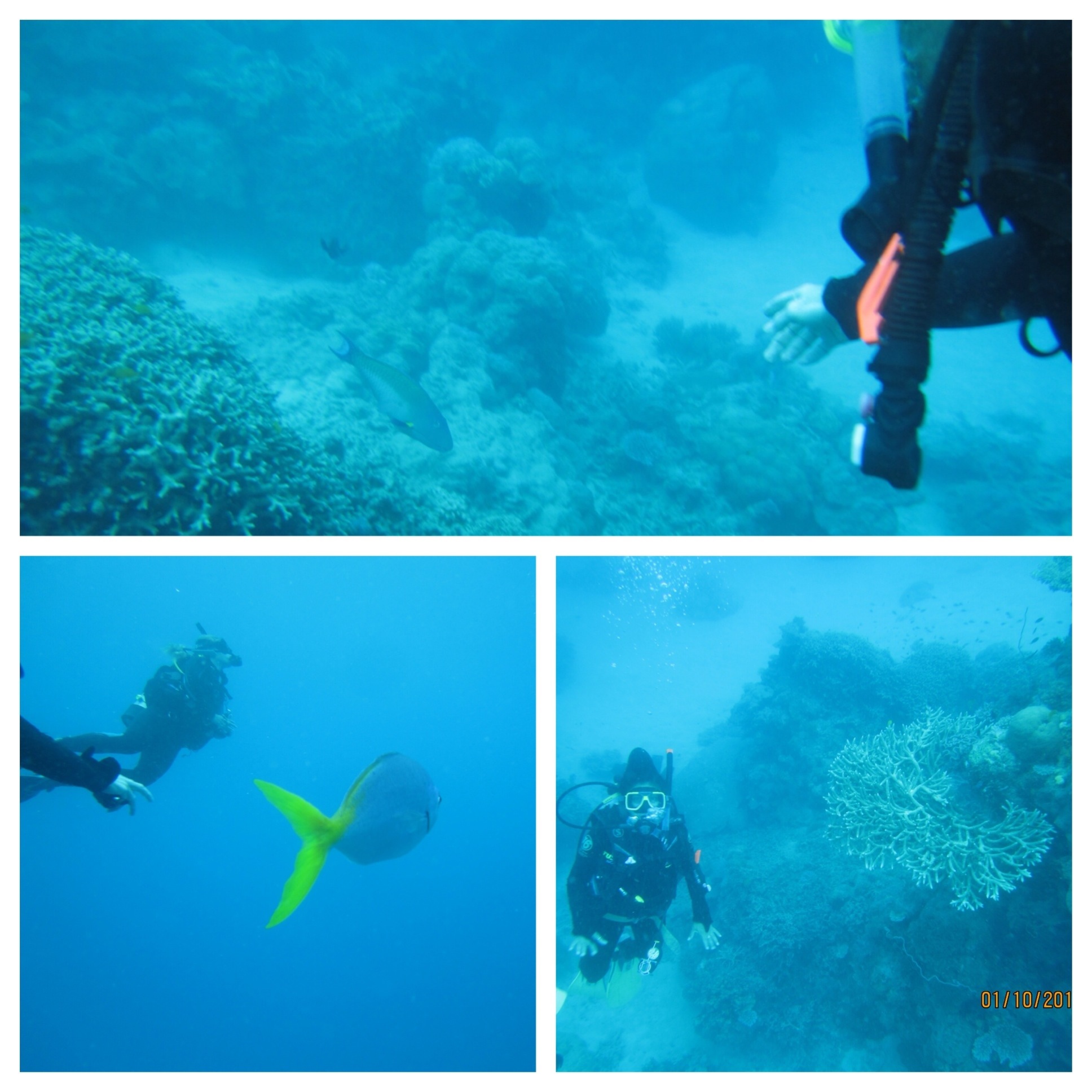(Australia’s northeast coast – 12 January 2014) From Sydney we flew to Brisbane, the city in the middle of what they call Australia’s “Gold Coast.” Brizzy, as its nicknamed, rides the easternmost edge of the continent and aligns closely with the Great Barrier Reef’s furthest extension to the south. We had about 10 days in front of us before Australia would be checked off our itinerary. To fill that time with Aussie exploration, we rented a shiny red car and drove from Brizzy to Cairns, making dozens of stops along the way. Aussie road trip!
Scheduled stops were Rainbow Beach, Bundaberg and the egg-laying sea turtles on Mon Repos, Mackay, and Townsville. Unscheduled stops included, Airlie Beach, Mission Beach, Dingo Beach, etc. [Yes, lots of beaches].
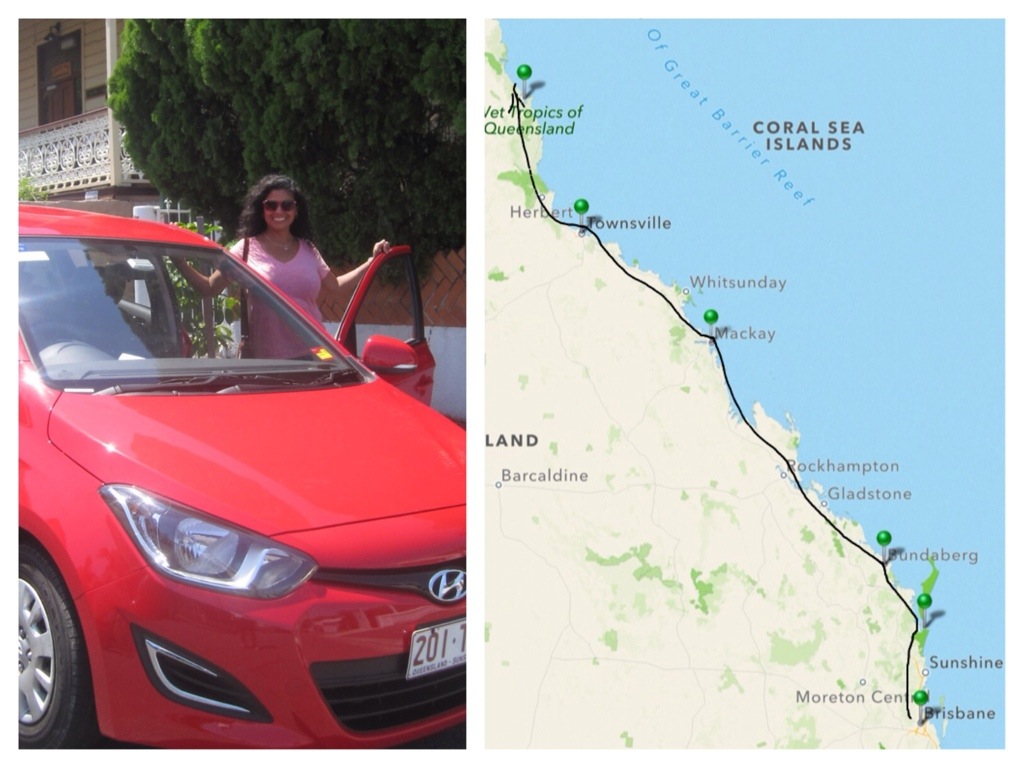
No Place to Rest for Turtles
Mon Repos (French for my rest) is a protected beach near the town of Bundaberg where mama sea turtles have been coming for thousands of years to lay their eggs. For a myriad of reasons, the numbers of these turtles has been in steep decline for decades. (No doubt, the decline started when European explorers first settled the area.)
Conservation efforts since the 80’s have helped to reverse the trend and promote the survival of these awesome creatures. Every night between November and March (egg-laying season), the public is invited to get involved. For a totally reasonable fee of $10, Jessica and I eagerly checked it out.
Once the sun sets and darkness pervades the beach, mother sea turtles emerge from the water, drag themselves across the beach to the high sand, and lay a clutch of between 100 – 150 eggs. The turtles don’t all come rushing out of the water at once, mind you. And they don’t have a set schedule, preferring to appear at random times throughout the night.
Jessica and I arrived to the Conservation Center around 6:30 pm. That’s the building just off the beach where people gather into color-coded groups until the Ranger gets word that a turtle has been spotted on the beach. “I need everyone with a green sticker to gather on the north walkway, please,” shouts the rangers. Jessica and I had pink stickers. About 20 minutes later, “If you have a blue sticker, please make your way to the walkway on the south side of the building.” After another 30 or so minutes had passed when the yellow-stickered folks were called. More time passed. We sat waiting and worrying there wouldn’t be a turtle for us. We saw one of the groups that had previously left for the beach come back to the center because their turtle had changed its mind and returned to the sea. Lightning flashed in the distance from a far-off storm and that may have caused some of the turtles to abandon their mission.
Finally, around 10:15 our group was called forth. Go pink! We were the last group and so the Ranger that seemed to be in charge throughout the night became our guide. We liked him. Loud and enthusiastic was his style.
Loggerheaded Mama
Groups were big. There were nearly 60 of us marching along the dark beach towards our turtle. It was quite dark, but we could make out tracks in the sand where other turtles had already made their beach crossings. Once arriving at the path of our turtle the Ranger asked us to pause and wait for him while he walked further up the high sand where our turtle was preparing her site for egg-laying. A team of researchers had already positioned themselves behind our mama turtle…to monitor her behavior. The Ranger returned informing us it was a Loggerhead, the most common variety found on this particular beach. He then invited us to walk slowly and quietly up to where she was nesting.
With so many people it was hard to see, but as we bunched around her, mama turtle was in the process of digging the pit within which she would drop her clutch. The Ranger placed a flashlight right by the hole (right at her butt) so that we could all see what was happening. She digs the hole with her two hind flippers so her head is facing the opposite way. The Ranger claimed she didn’t even know we were there. Seems hard to fathom, but okay. He made no effort to whisper, either, telling us loudly that human voices were outside the hearing range of sea turtles.
Uh oh! Mama turtle suddenly stopped digging. The Ranger instructed us to all hold really still. Our turtle then lumbered herself around in a circle and surveyed the area. If she didn’t know we were there before, there could be no doubt about it now. Sixty people, 20 of them fidgety kids, crouched 5 feet away from her? She couldn’t not know we were there. Fortunately for us she was undeterred and continued on about her business. (She obviously didn’t feel threatened.) Peering into the unfinished hole, the ranger explained that she had stopped digging because of a root. Moving herself to a new spot only a couple of meters away from where she was, she hit reboot and started over from scratch. The benefit to us was that we would now get to see the whole process.
Sand Angels
Her first step was to clear the top-sand off the nesting site using a technique the Ranger called body-pitting. She did this in a similar way to how kids (or adults) make angels in the snow, by sweeping the arms and legs back and forth. Unlike the snow-angel technique, however, the turtle forcefully flings away the dry sand with her flippers. Since we were all gathered in a semi-circle around her much of the flying sand landed in our laps. That was very cool.
After body-pitting for about 15 minutes, our lady shifted gears into digging herself a new egg cavity. Again, the Ranger placed a flashlight right behind her digging spot so we could all witness how skillfully this gentle creature used her flippers to dig. With machine-like precision, she pierced the sand with the tip of a her left flipper and lifted out a “handful” of sand, placing it away from the hole. A momentary pause… and then the right hind flipper did the same. This motion was repeated, one flipper then the other, until the hole was as deep as her flippers could extend.
She was now ready to lay her eggs into the hole. Plop, plop-plop! They started slowly dropping out of her like lottery balls on mega-millions night. The Ranger asked the kids closest to her to count the eggs as they drop and let him know once the number reached ten. Apparently, once the turtle starts laying eggs it goes into a trance-like state and won’t stop for any reason. Taking advantage of this fact, the Ranger turned on more lights around her, not just on her back side, but in front of her, too. Researchers went into action at that point, measuring her shell long-ways and side-to-side, and checking to see if she’d been tagged before. Visitors were now invited to take pictures.
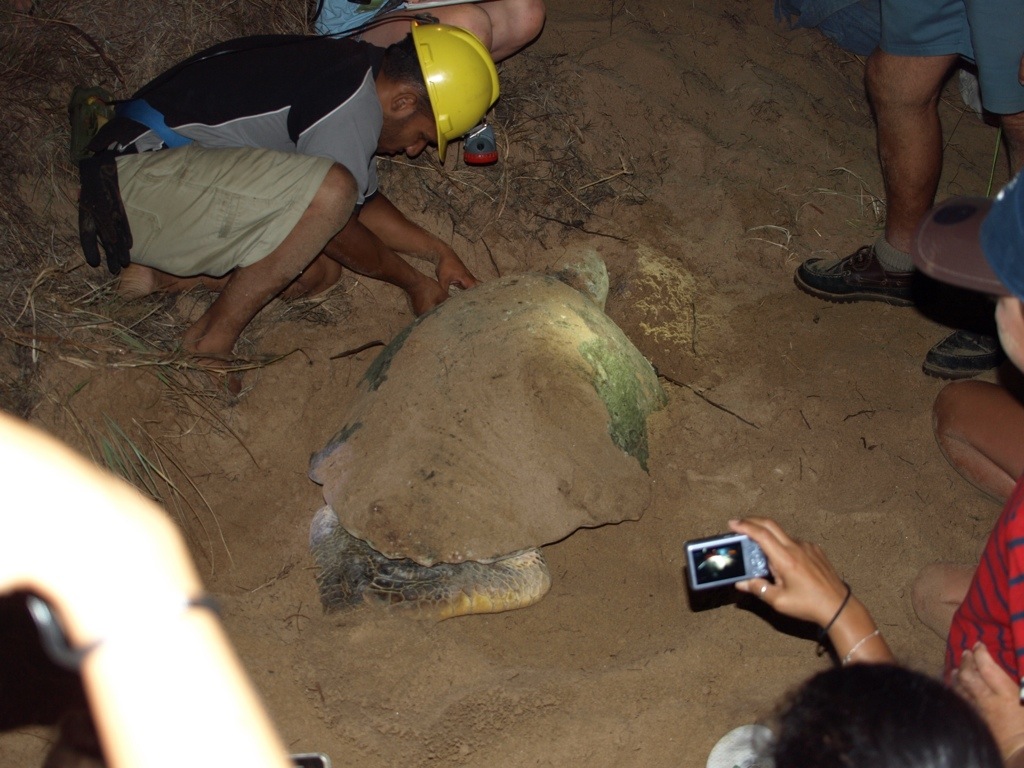
All of this attention seems ridiculously intrusive, right? It only starts making sense once you consider the grander purpose- saving a species from extinction. To be effective in this goal, the conservationist have to understand what makes these turtles tick. Hence, all of the tracking and monitoring. The idea of inviting the public to view this awesome natural event is twofold: First, it educates the public and gives them a stake in the well-being of the turtles; secondly, it helps fund the conservation effort- each visitor pays $10 for the privilege of seeing the turtles in action. A maximum of 600 tickets are sold each night. They ALWAYS sell out.
Doing the Slow Shuffle
After our gal finished laying her clutch, her final step was covering the eggs. For this she used her great flippers again to scatter sand over the eggs and, in fact, the entire nesting area. Her flippers are amazingly quick and strong, throwing the sand 15-10 feet behind her with each flick. By the time she was done it was impossible to tell exactly where she’d laid her eggs. Where it not for a marker the Ranger placed next to the hole, they’d be hidden (from both us and any potential predators).
All that was left for her now was a slow shuffle back to the sea. The group parted at her front as she began drag-crawling across the sand. The space behind her then filled with her fans. Her journey back to the waves appeared so laborious. She simply looked exhausted; three scoots forward and then she’d stop and rest. We didn’t actually see her climb onto the beach so maybe that was just how she always walks and we just assumed she was exhausted from laying 112 eggs. Anyway, we were feeling for her up to the end… when she reached the surf and then slowly vanished into the waves. That was the most poignant part to me…seeing her return to the wild, alone, after sharing a small portion of her story with those curious humans for the previous hour or so.
Conservationists have found that sometimes the turtle’s choice of nesting sites is less than ideal. If they don’t lay their eggs high enough up into the dunes, the tides can reach them and make waste of all her efforts (by essentially drowning her eggs). For this reason, the conservationist will sometimes relocate eggs to a safer location. They have found that by doing this, the number of successful hatchlings will increase by 30 – 40 thousand each year. Which sounds like a huge number until you learn that only one in a thousand hatchlings will survive to maturity.
One of the conservationist removes the eggs and lines them up for us to relocate. Everybody pitched in to move the eggs to higher ground.
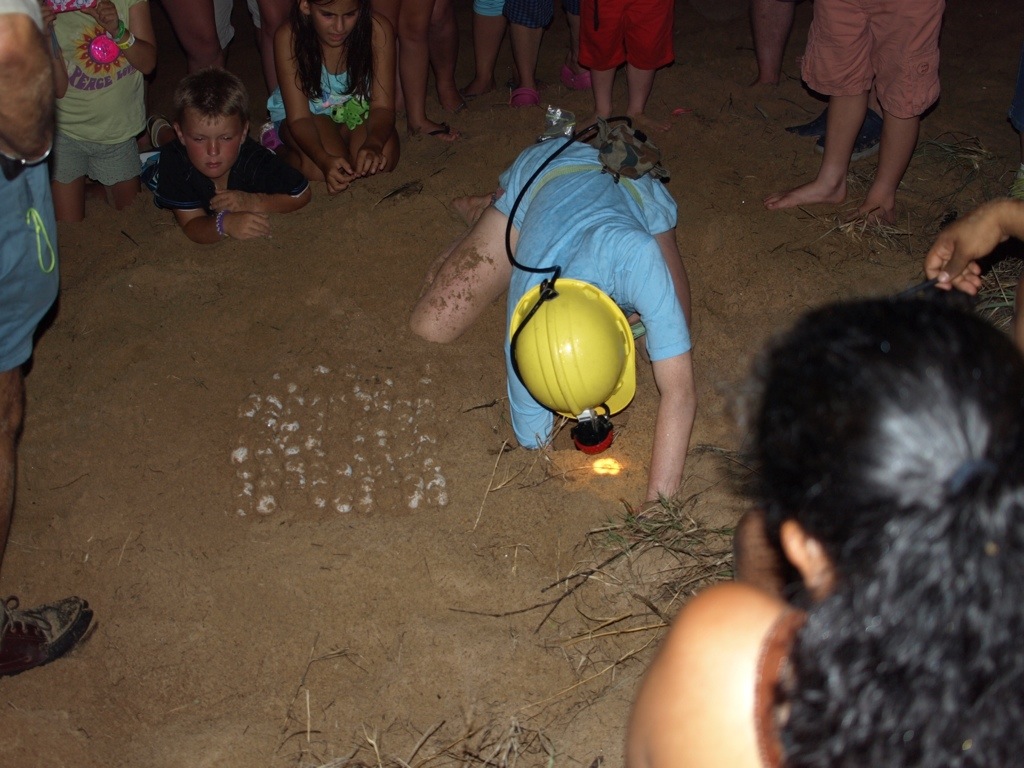
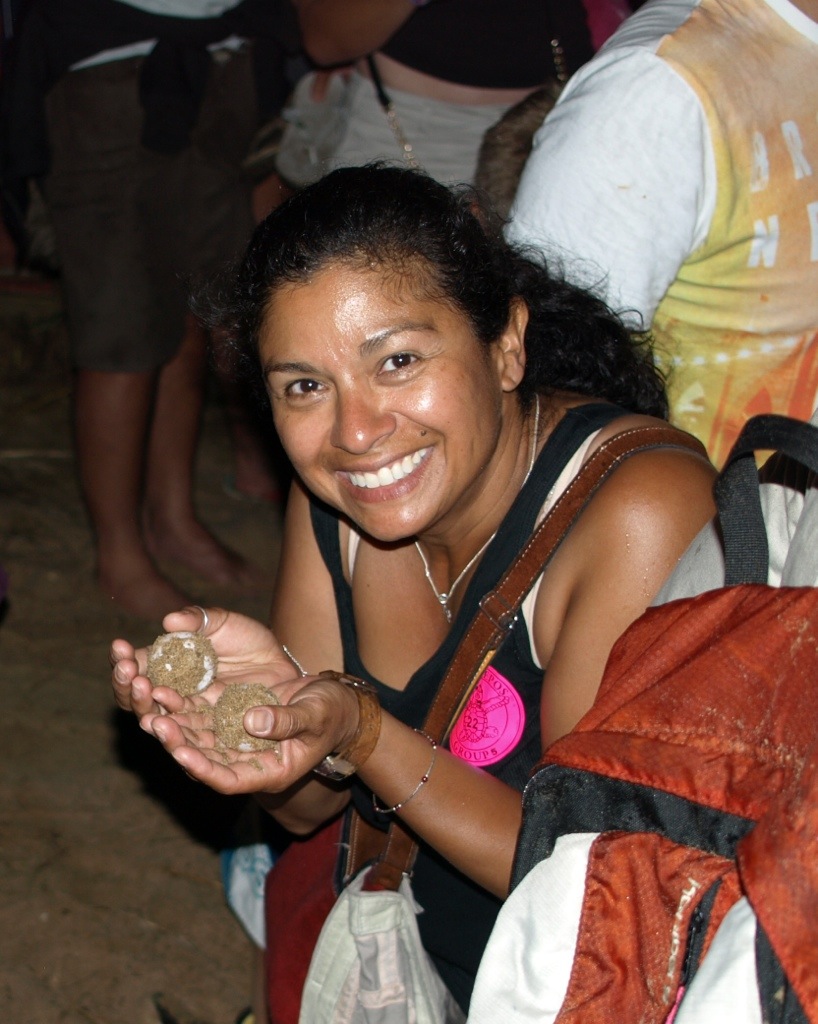
Was The Great Barrier Reef Great?
Prior to beginning our world tour Jessica and I got ourselves scuba certified. Our primary motivation at the time was so that we would be ready to scuba dive at the Great Barrier Reef. Finally, that long-awaited day had arrived. We booked a day-trip to the reef out of Cairns that included 3 dives.
The weather in Cairns was off and on rain. Away from the coast at the dive site, however, we found lots of sun splitting the clouds and not a drop of rain. Visibility in the water was excellent, too. Everything was working out beautifully.
Our dive boat was named the T6. (…fly like a T6, like a T6)
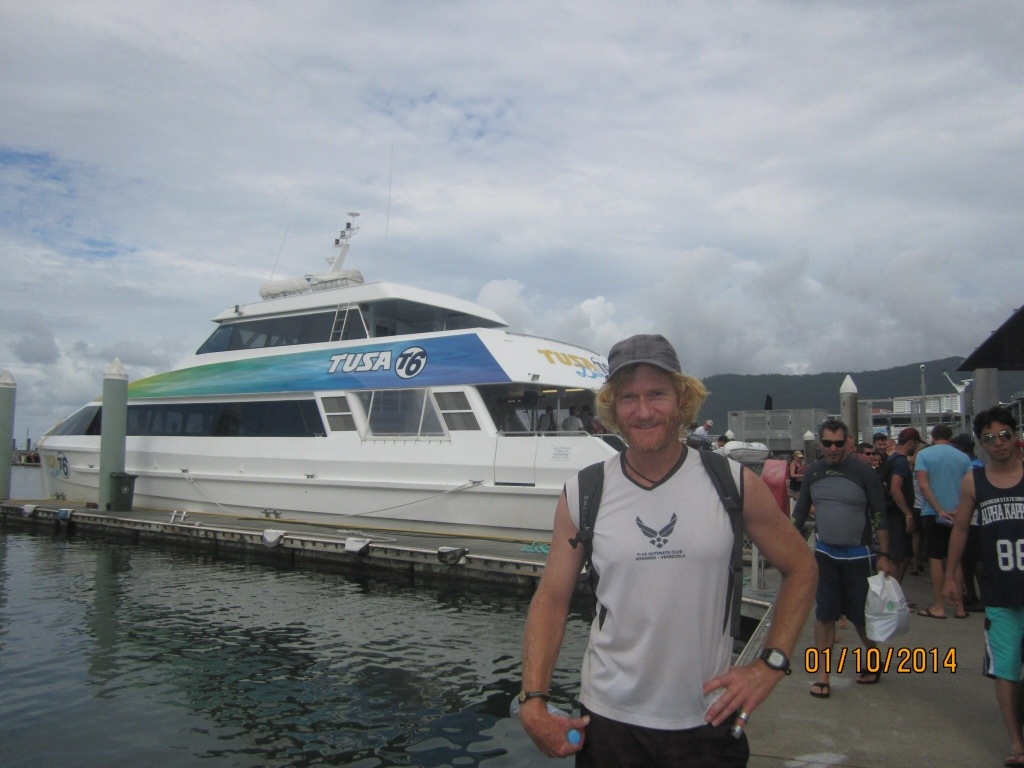
This was the first ever dive experience for either of us (since completing our training) and much of it was a bustling blur. There were 60 or so divers and snorkelers on board our catamaran, plus about 15 staff. This meant we’d be diving in a somewhat industrial environment. I’ve heard diving excursions can be a cluster and this was certainly true in our case. The crew has to keep things moving so they’re calling for divers to hurry up and get their tanks on, but then it’s hard to find room to maneuver amid all of the bodies. It’s chaos to be sure, albeit a happy chaos…since everyone is feeling the thrill of diving the GBR.
Even after we’d stepped off the boat’s back deck and were bobbing in the open ocean, the chaos continued. There’s just so much going on! Which one of these black-suited bodies belongs to Jessica? Where’s my guide? We were all wearing lycra “stinger suits,” which look like wet suits, but are simply a covering to prevent jelly fish stings. I saw no jelly fish in the water so for me they only served to make every diver look nearly identical.
Our first dive was over and done with in less than 30 minutes. Crikey! Where does the time go? The scenery underwater was quite stunning. I don’t know why our photos are so void of color. We know part of the reason was that we didn’t use the underwater setting on the camera (because we didn’t know that setting existed). Bottom line, I swear it looks better in person.
Experience matters. Even the experience of just one dive had a large influence on the second. Dive two felt so much more relaxed and slowed down. It was on dive two that we saw a nice-sized reef shark. We are also happy to report that we found Nemo. The little orange and white clown fish was swimming happily amid an anemone.
After dive two, a shockingly delicious buffet lunch was served. Meanwhile, our boat relocated to a second dive site. Minutes later and we were refitting ourselves a third time for our final dive of the day. At this point, we were feeling like pros.
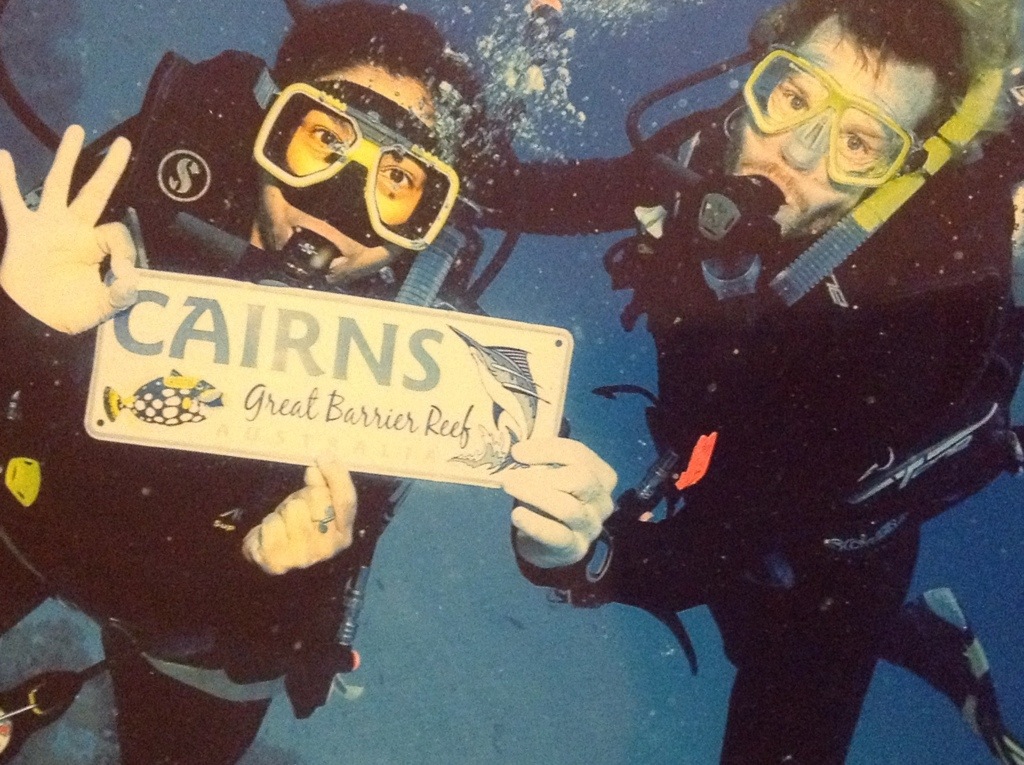
Between Brizzy and the Reef
A road trip is just a car ride unless you stop along the way see the sites. We did plenty of that. Rainbow Beach was wonderfully pretty, but unseen jellyfish tentacles in the water discouraged us from swimming much. We swam some, just not for long…after mild stings were felt here and there on the skin, it seemed prudent to get out. In the photo below you’ll notice a tall orange-yellow flag. In a wider shot you would see two of them, placed by the lifeguards to corral everyone into a defined swimming area. So, you’ve got this endlessly long beautiful beach, but then everyone is bunched into one relatively small swimming area. I know they do it for safety reasons- so they can keep an eye out for trouble -it’s just kinda weird.

Bundaberg is home to the largest bat species in Australia, the Flying Fox. We first saw them flying around in the evening. The next day we found their daytime home in a nature preserve called Baldwin Swamp.
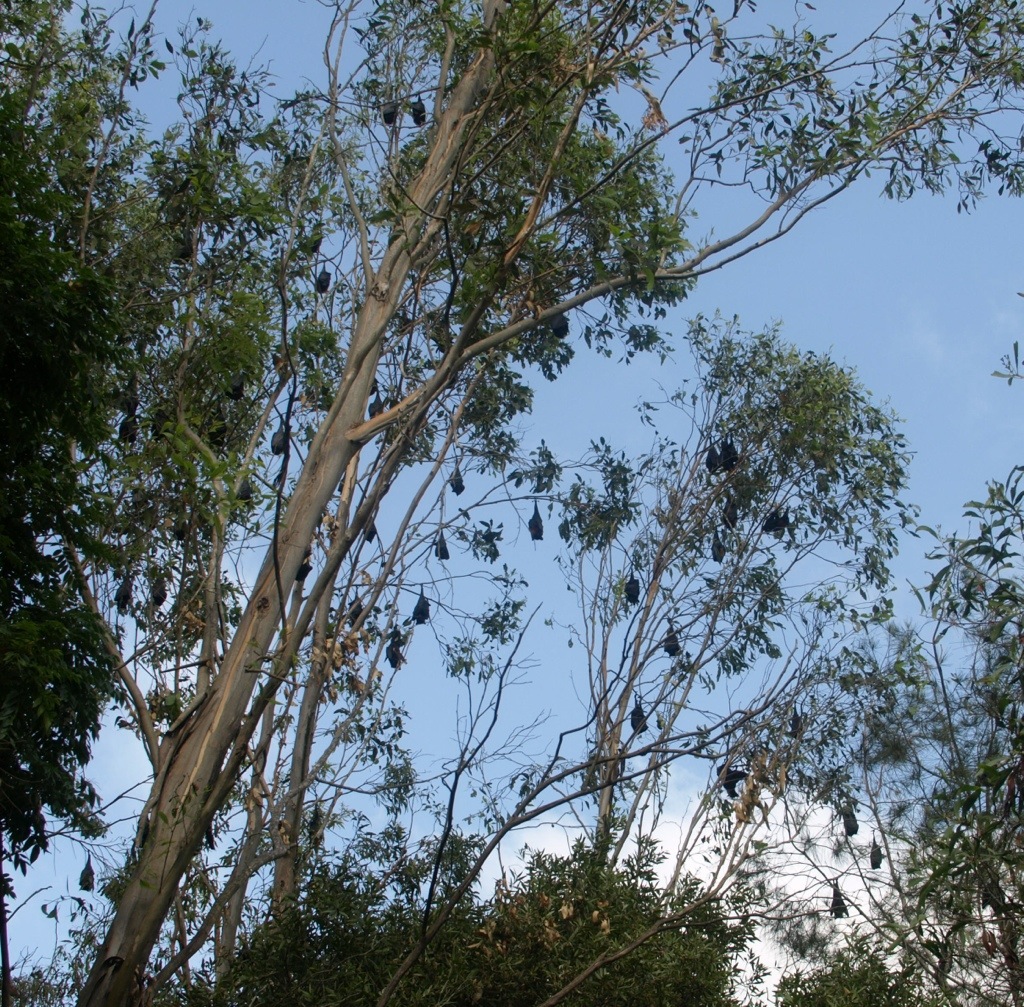
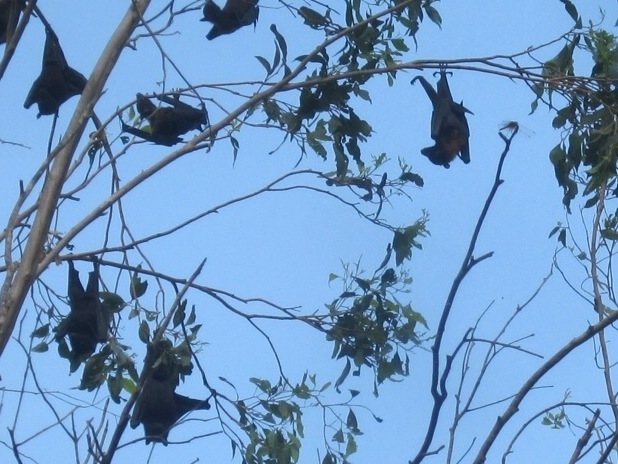
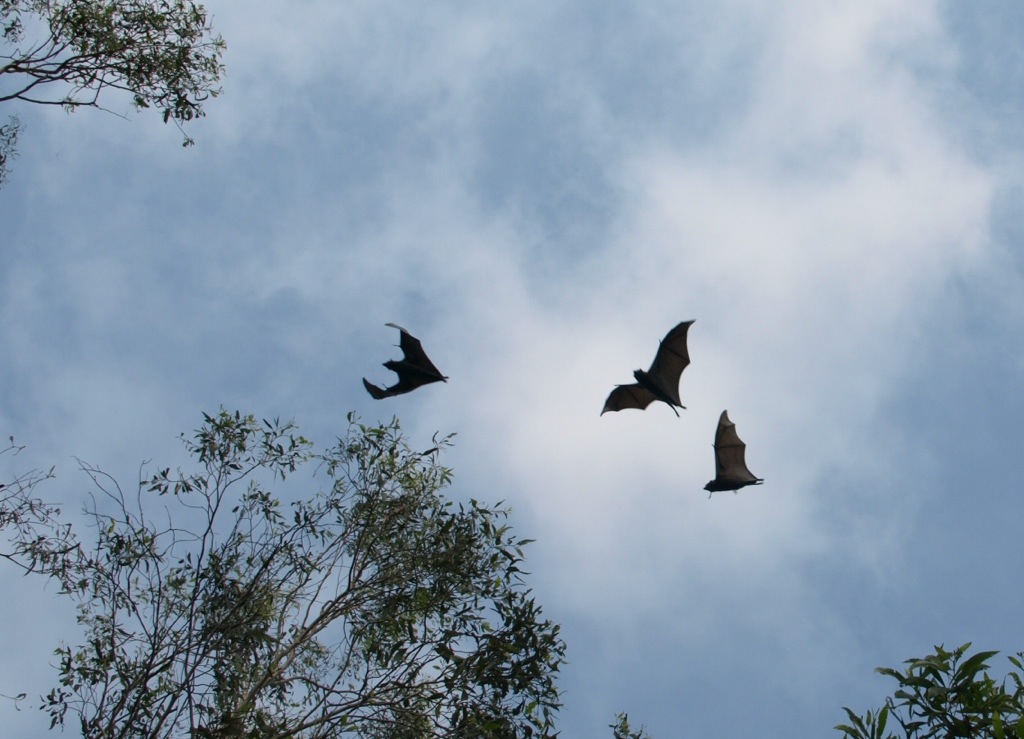
After Jessica’s narration, listen to the shrieking sounds made by the bats.
Airlie Beach was supposed to be a can’t miss spot, but once we got there we learned the real beach-to-see was on an offshore island called White Haven, named for its gleaming white beaches made of silicon. Unfortunately, we arrived too late to catch the boat. Now we have another reason to return to Australia some day. We still enjoyed hanging out at Airlie Beach and sharing lunch under some palm trees.

Driving between Mackay and Townsville, we stopped at two different swimming holes. The first was so clean and clear, we snorkeled a bit. It was like swimming inside a large aquarium. At the second spot, it was cool that we were the only ones there. So REEE-freshing!
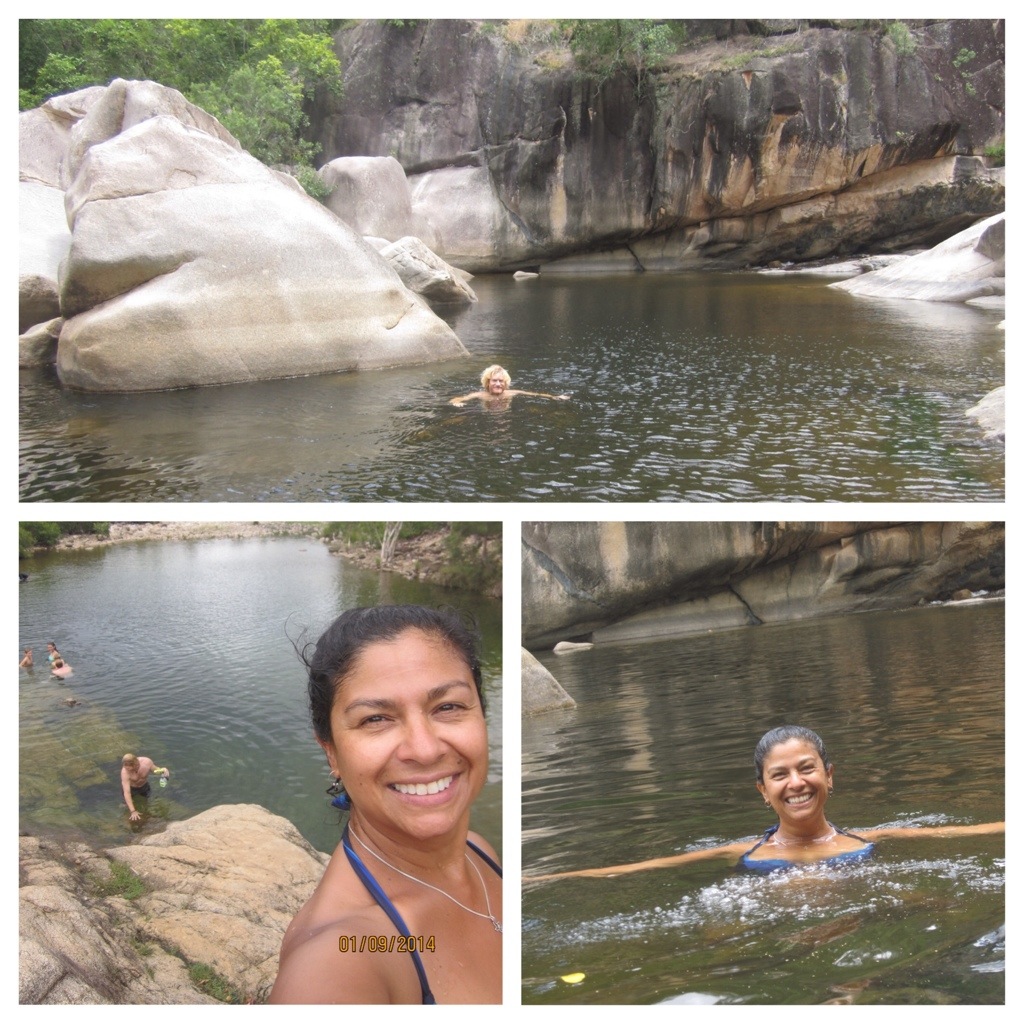
Wild kangaroos were not seen everywhere like the sheep in New Zealand, though we did find them here and there.
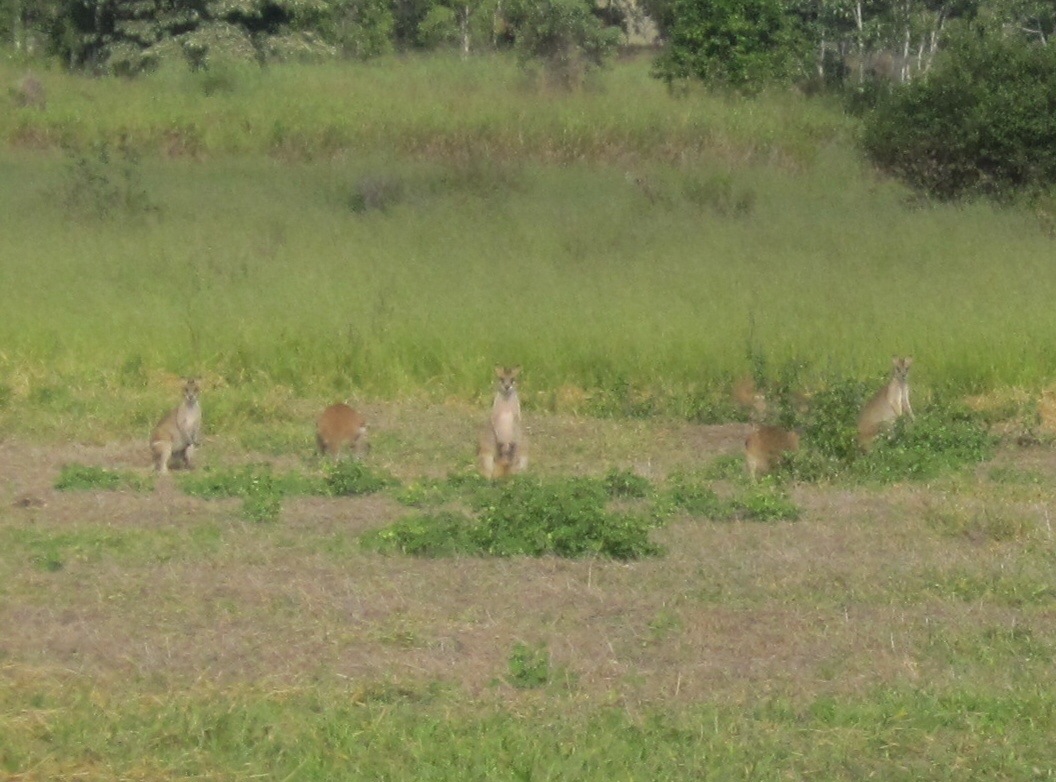
Burger King becomes Hungry Jack’s down under. (I wonder what they have against the king?) I liked going for their Frozen Cokes (just like a Coke-flavored Slurpee). They were running a special- get a large frozen Coke for only $1. Find anything that cheap in Australia and you’d better jump on it!
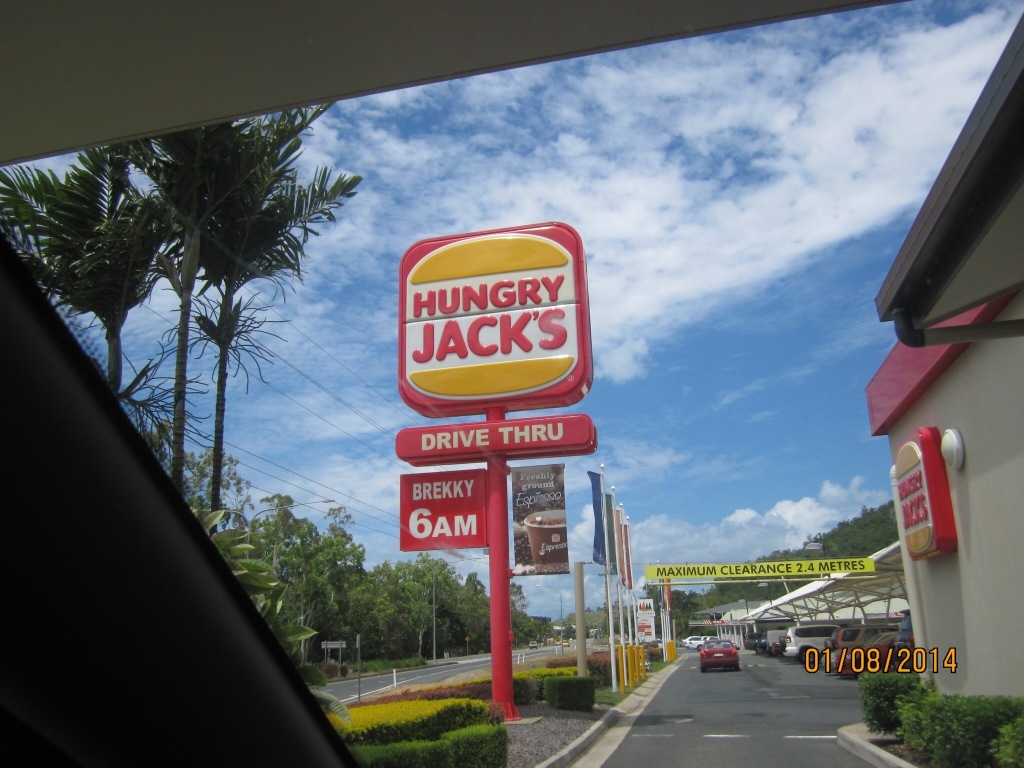
Yet another gorgeous beach. I love the big bold sky.
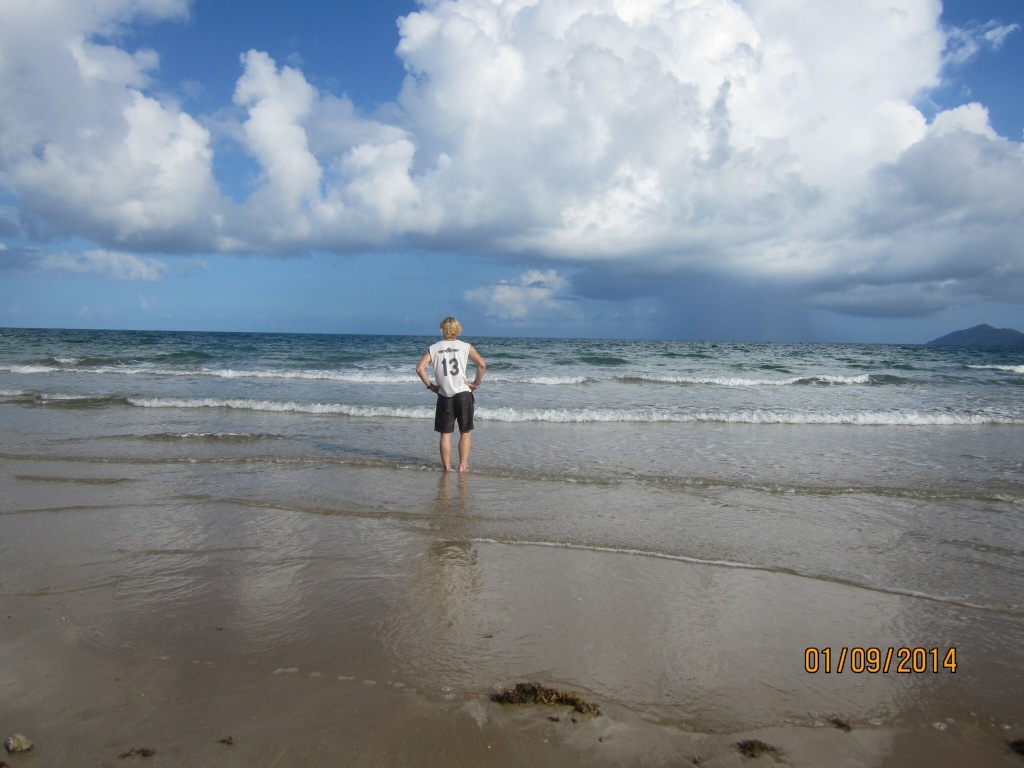
Traveling in Australia like we did was good, but so incomplete. The land of oz is HUGE- comparable in size to the United States. It’s as if we’d gone to Disney World and only rode one ride. Coming back to Australia will be in our heads for a future time. For now, it’s onward to Indonesia.

